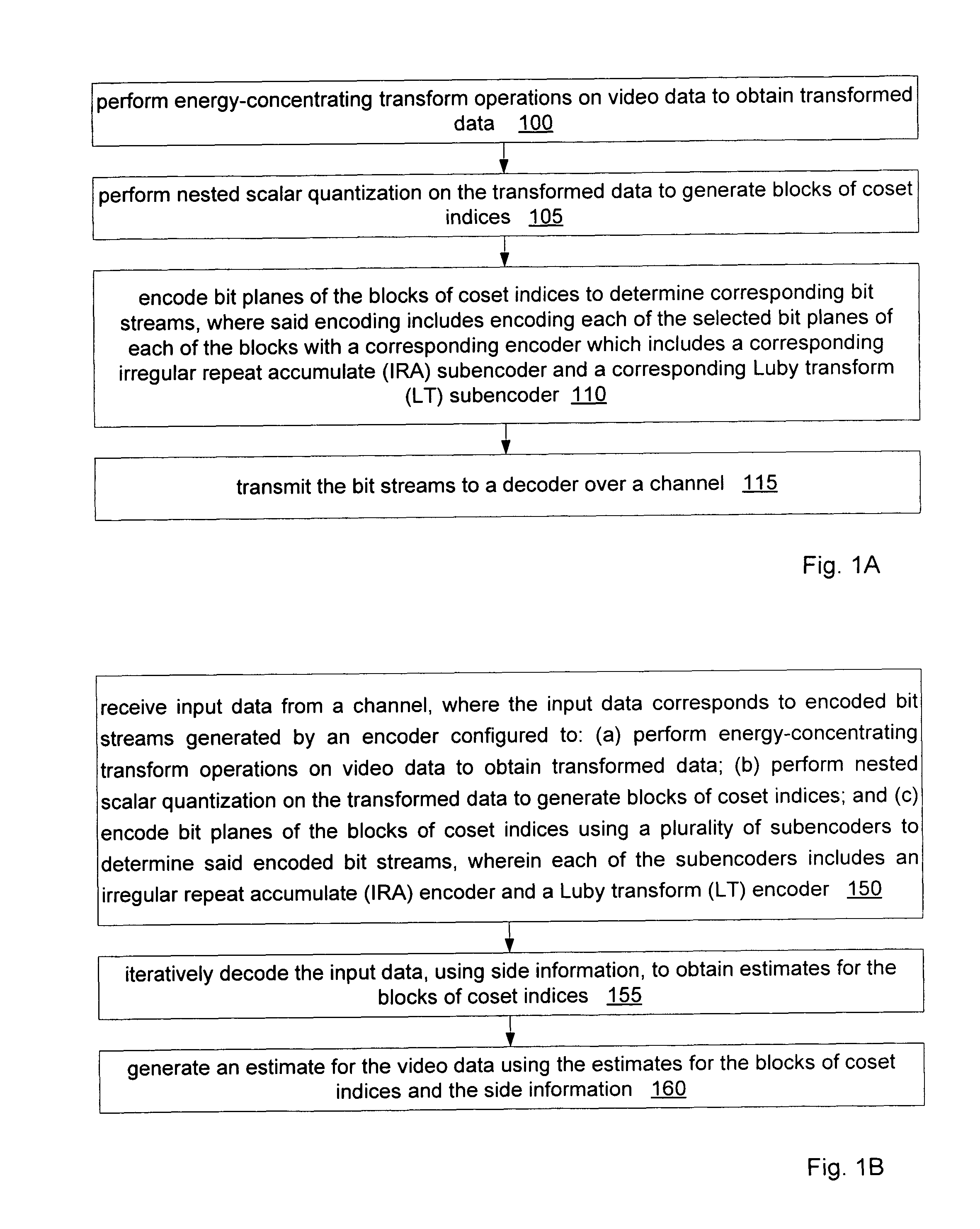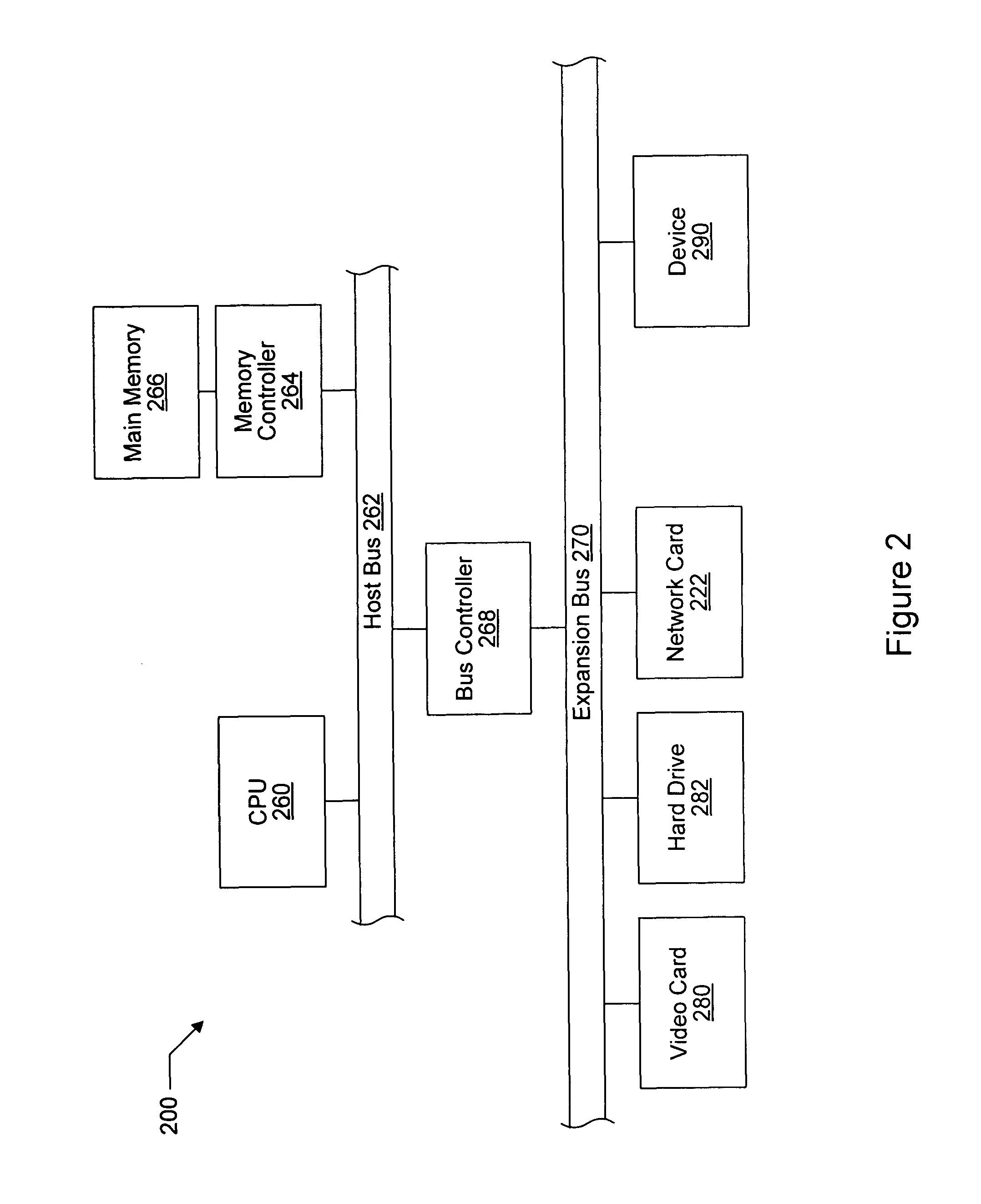Distributed joint source-channel coding of video using raptor codes
a video and raptor technology, applied in the field of video transmission, can solve the problems of limited network bandwidth and the requirement of real-time playback on the one hand, severe impairment of wireless links, and the inability to scalable bitstreams, etc., and achieve the effect of improving video quality
- Summary
- Abstract
- Description
- Claims
- Application Information
AI Technical Summary
Benefits of technology
Problems solved by technology
Method used
Image
Examples
Embodiment Construction
[0015]U.S. patent application Ser. No. 11 / 494,678, filed on Jul. 27, 2006, entitled “Layered Wyner-Ziv Video Coding for Transmission over Unreliable Channels”, invented by Qian Xu, Vladimir Stankovic and Zixiang Xiong, is hereby incorporated by reference in its entirety.
[0016]Please note that a list of references is included at the end of this detailed description. The notation “[n]” is to be interpreted as a reference to the nth reference in the list of references.
[0017]In one set of embodiments, a method for encoding video data may involve the following actions, as illustrated in FIG. 1A.
[0018]At 100, energy-concentrating transform operations may be performed on video data to obtain transformed data. In some embodiments, energy-concentrating transform operations may be discrete cosine transform (DCT) operations. In other embodiments, the energy-concentrating transform operations may be conditional Karhunen-Loève transform operations.
[0019]At 105, nested scalar quantization may be ...
PUM
 Login to View More
Login to View More Abstract
Description
Claims
Application Information
 Login to View More
Login to View More - R&D
- Intellectual Property
- Life Sciences
- Materials
- Tech Scout
- Unparalleled Data Quality
- Higher Quality Content
- 60% Fewer Hallucinations
Browse by: Latest US Patents, China's latest patents, Technical Efficacy Thesaurus, Application Domain, Technology Topic, Popular Technical Reports.
© 2025 PatSnap. All rights reserved.Legal|Privacy policy|Modern Slavery Act Transparency Statement|Sitemap|About US| Contact US: help@patsnap.com



